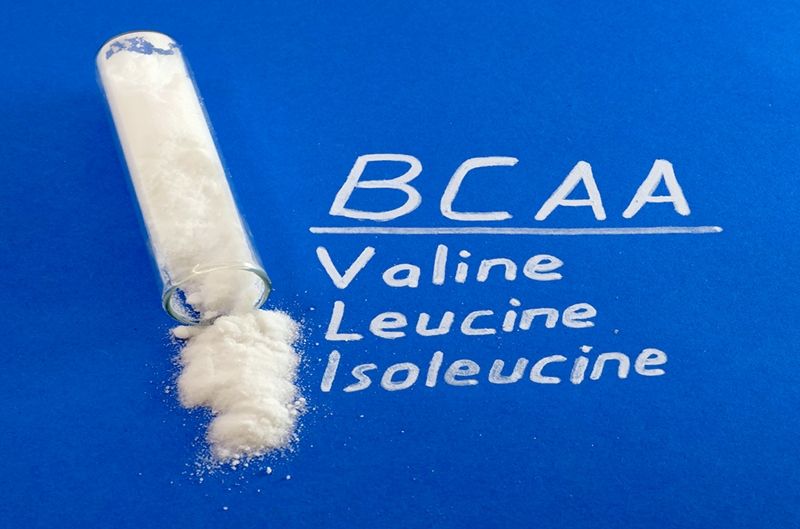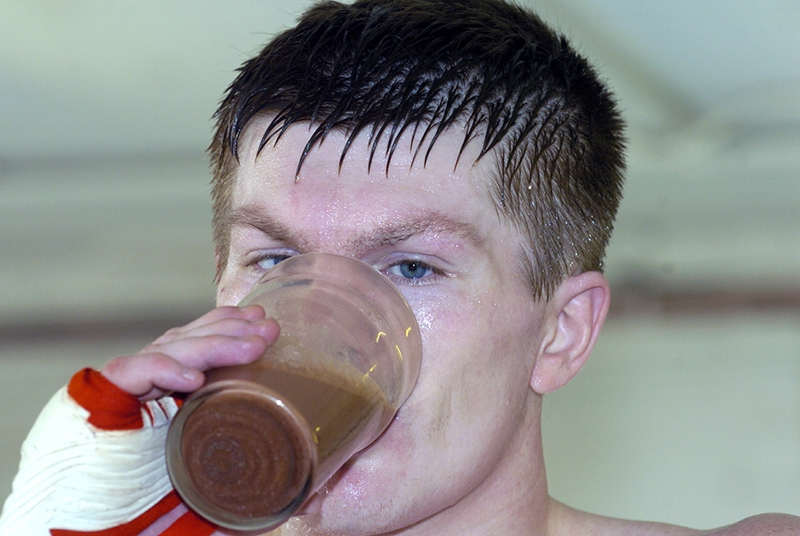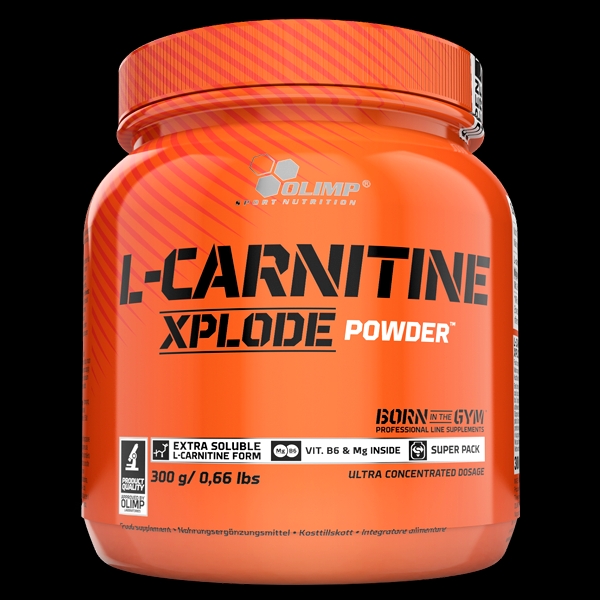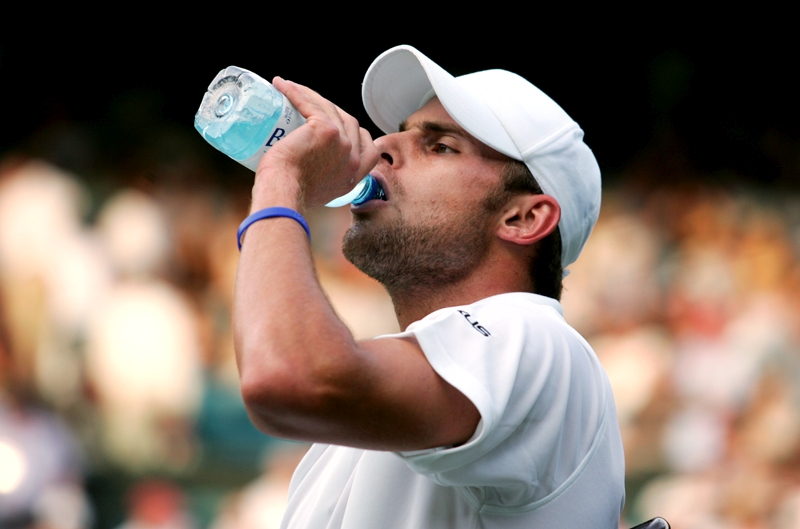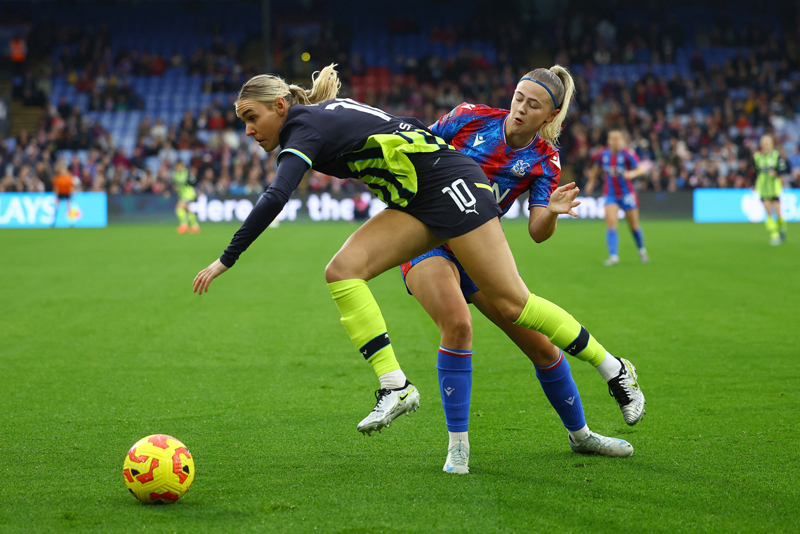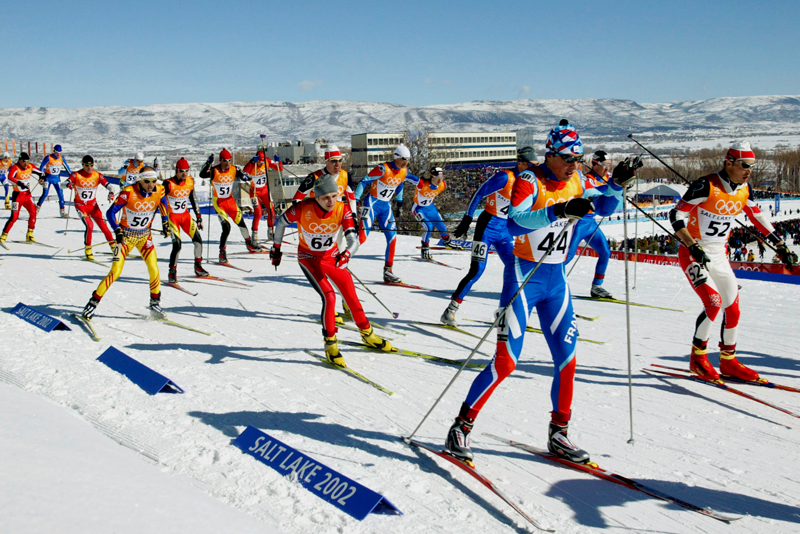You are viewing 1 of your 1 free articles. For unlimited access take a risk-free trial
Glutamine for athletes: does it really do what it says on the tin?

Andrew Hamilton looks at the evidence on glutamine supplementation and asks whether it can help athletic performance?
When it comes to enhancing performance through sports nutrition supplements, the phrase lies, damn lies and supplements springs to mind. While not all supplements are worthless (witness the widely scientifically researched and documented benefits of creatine for example), the fact remains that many consumers are hoodwinked by spurious ‘scientific’ claims into parting with hard-earned cash for supplements, which have never been shown to exert beneficial effects in properly controlled scientific studies. Worse, these supplements are frequently purchased at the expense of a good, wholesome diet, which should always form the foundation of any nutritional strategy.What about glutamine?
Just occasionally however, something comes along that is worth looking at quite carefull. Glutamine, an amino acid building block of protein (see panel 1 and figure 1) has historically attracted the attention of exercise biochemists and athletes on a number of fronts. Not only does it seem to lie at the ‘crossroads’ of protein metabolism and synthesis, glutamine also appears to be intimately connected to glycogen (muscle carbohydrate) synthesis, protein (ie muscle) synthesis, immunity and possibly also acting as a biochemical marker for overtraining.Panel 1: The building blocks of protein
Proteins are built from long chains of amino acid building blocks. There are 26 different amino acid building blocks used to construct human proteins, such as muscle, hair and skin. Just as we can use the 26 letters of the alphabet to make hundreds of thousands of different words, by altering the sequence and number of amino acids in each chain, we can make hundreds of thousands of different proteins. Of the amino acids above, eight are essential. These need to be supplied in the diet from proteins we eat, but when we have these, we can make all the other ‘non-essential’ amino acids (such as glutamine) in our cells. The eight essential amino acids are: Tryptophan (Trp), Valine (Val), Leucine (Leu), Threonine (Thr), Isoleucine (Ile), Methionine (Met), Lysine (Lys), Phenylalanine (Phe) (see figure 1 below).Figure 1: the eight essential amino acid building blocks of protein
Essential, non-essential and conditionally essential
In the past, nutritionists have focussed most of their attention on the essential amino acids (figure 1), believing that provided they were supplied in sufficient quantities, all the other non-essential needs could be met. For example, glutamine can be synthesized from many different amino acids, including glutamic acid, valine and isoleucine. However, it is now understood that glutamine is also a precursor for many other amino acids and an important fuel for the immune system, the brain and gut mucosal cells. It is also at the heart of a mechanism controlling the acid-base balance in the body and may also be a direct regulator of protein synthesis and regulation.The fact that the body has so many pathways for synthesizing glutamine, suggests that not only does this amino acid lie at the heart of an important metabolic crossroad, but also that its adequate supply is crucial for optimal functioning of the body. For several decades, glutamine has been used routinely in hospitals to help improve immune function in the treatment of burn and other trauma patients(1). Over a period of time, researchers began to focus on the parallels between the trauma of hospitalization and the trauma of exercise stress. This research indicated that under both these conditions, the body's requirement for glutamine may exceed its capacity to produce it, and at that point, glutamine may then become conditionally essential(2).
When enough might not be enough
The human body stores more glutamine than any other amino acid, and for good reason. We use a lot of it all the time. The immune system, kidneys, pancreas, gallbladder and liver all demand glutamine constantly, and during exercise, the demand rises still further. The main glutamine reservoir in the body is within muscle cells, where it accounts for nearly two thirds of the total free floating amino acid pool(3) Even at rest, the turnover of glutamine is so high that all the body’s stores would be used up within seven hours if glutamine wasn’t being constantly resynthesized. Start exercising however and the demand for glutamine rises dramatically.When the synthesis of glutamine can no longer match the demand, both muscle and plasma glutamine are ‘borrowed’ by the body, and glutamine levels can become depleted for between hours and days depending on the duration and intensity of an exercise bout (see figure 2). This is undesirable since glutamine is involved in maintaining proper cell volume(4); as cell volume decreases, catabolism (muscle breakdown), sets in. Not only that, but evidence is mounting that lowered plasma glutamine also depresses immunity and inhibits muscle glycogen synthesis(5), none of which are desirable for athletes in training.
Figure 2: Glutamine production and utilization in health and catabolic/hypercatabolic situations*

Solid blue arrows indicate tissues that contribute glutamine in the well-fed state, which raises blood plasma levels. White arrows indicate tissues that require glutamine. In health and/or well fed states, glutamine stores are in equilibrium in plasma/bloodstream and tissues, and are maintained constantly mainly by the liver and skeletal muscles, two major stores of glutamine in the body. On the other hand, cells of the immune system are extremely dependent on glutamine consumption in all situations. [*Figure adapted from Cruzat et al (Nutrients. 2018 Nov; 10(11): 1564)]
Early glutamine research
Some of the early studies into glutamine and athletic performance produced promising results, which elevated glutamine’s status into that of a supplement worthy of serious consideration by athletes. These studies included the following:- Glutamine and improved immunity - Athletes in hard training are often prone to infections, particularly of the throat and the upper respiratory tract, and some evidence suggested that this lowered immunity is at least aggravated, if not caused by glutamine depletion. Dröge and Holm (1997) reported that lowered plasma glutamine decreased the activity of ‘natural killer’ cells in the body and also lowered the CD4 T-cell count(6). In the same year, Castell and Newsholme demonstrated that giving post-exercise glutamine supplements, not only improved the ratio of immune T-helper cells to T-suppresser cells, but also reduced the level of subsequent infections(7). Their later research also found positive effects of glutamine on immunity(8,9).
- Glutamine and improved muscle growth - Many studies have suggested that glutamine stimulates protein synthesis and inhibits protein breakdown in muscles. One of the mechanisms by which glutamine appears to exert its effects is by increasing cell volume. Glutamine taken up by the muscle cells acts to draw fluid into cells through an increase in intracellular osmolality. This may then promote muscle fiber growth via the stimulation of an enzyme called nitric-oxide synthase (in a similar way that a mechanical stretch influences gene expression). Shabert et al (1999) reported that glutamine supplementation was successfully able to reverse muscle mass loss in non-exercising HIV patients(10), while Rennie et al (1996) found evidence that the glutamine pool size may affect an osmotic signalling mechanism that regulates the whole body protein metabolism(11).
- Glutamine and improved glycogen synthesis - Replenishing muscle glycogen stores after training is another crucial factor in recovery and adaptation to exercise, and glutamine seems enhance this process. Perriello et al (1997) found that not only can glutamine itself be used as a substrate to synthesise glycogen (which is normally synthesised from glucose units contained in dietary carbohydrates) but also that glutamine can increase the process of gluceogenesis in the body (where glucose and therefore glycogen can be made from carbon fragments other than those derived from glucose)(12). Put simply, glutamine seems to both provide a source of glycogen and tell other cells in the body to make glycogen from fragments of other molecules – thus adding to the normal glycogen replenishment that occurs when post-exercise carbohydrate is consumed. Glutamine may do even more; Wagenmakers (1998) reported that glutamine may act to modify the ‘citric acid cycle’ (the main energy producing pathway or furnace in muscle mitochondria) in glycogen depleted muscle, by supplying fragments to the cycle, which in turn may enhance fatty acid oxidation(13) Anything that increases fatty acid burning should in theory at least help an athlete produce more energy and act to spare precious muscle glycogen.
- Glutamine and brain function –Glutamine may also play a role in brain biochemistry. Glutamine is the precursor of glutamic acid (GA) and gamma-hydroxybutyrate (GABA – see this article) both of which are vitally important brain neurotransmitters(14). GA is an important excitatory neurotransmitter while GABA is inhibitory or calming. GA and GABA have to be synthesised in the brain from glutamine because of the three, only glutamine readily passes through the blood brain barrier. In some instances, it seems that extra glutamine may help ‘normalise’ the synergistic action of GA and GABA, which may account for the anecdotally reported ‘mental benefits’ of taking extra glutamine, including reduced sugar and carbohydrate cravings, more mental energy and improved mood and memory.
Recent glutamine research
On the face of it, these early findings seem promising and suggest that optimizing glutamine intake could play a valuable role into boosting immune function, enhancing recovery and reducing fatigue, all of which should improve exercise performance. That’s the theory, but until more recently, little data was available to show whether supplementing the diet with extra glutamine can actually improve performance. Over the past decade or so however, more studies have been carried out looking into this very question, with a number of interesting findings. Summarized below are some of the key studies, outlining the study protocol and main findings (studies that used glutamine in conjunction with other ergogenic nutrients such as creatine are not included here):Study design: Thirteen runners (9 male and 4 female) who supplemented 0.1g/kg of glutamine four times a day for 14 days(15).
Protocol: Twice-daily interval training for a period of 9-10 days.
Findings: There was an increase in nasal IgA concentrations but no change in other immunological parameters or physical performance. [Note however that IgA is an important immune antibody that plays a crucial role in the immune function of mucous membranes and thus helps protect against upper respiratory tract infections – something that athletes are prone to.]
Study design: Soccer players who took 3.5g of glutamine peptide + 50g of maltodextrin or only 50g of maltodextrin(16).
Protocol: Administered 30 minutes before the exercise, consisting of a protocol that simulates the movements of a soccer match (intermittent exercise on the treadmill).
Findings: Improvement in the time and distance, and reduced feelings of fatigue after supplementation with glutamine peptide and carbohydrate.
Study design: Ten physically active males who took L-glutamine in two doses (0.05g/kg or 0.2g/kg) or water before exercise(17).
Protocol: An exercise session on a cycle ergometer at 75% of the VO2max.
Findings: An increase in the time until exhaustion in the glutamine supplemented group compared to water only group.
Study design: Ten female basketball players who took L-glutamine supplementation in low dose (1g/500mL) or high dose (2g/500mL) or water (placebo)(18).
Protocol: A 40-minute basketball game.
Findings: Improvement in basketball shooting performance and visual reaction time with a low dose of L-glutamine compared to water ingestion (placebo).
Study design: Twenty eight well-trained men who took one four supplementation types: 1) 0.25g/kg of glutamine, 2) 50g of maltodextrin 3) glutamine and maltodextrin (0.25g/kg and 50g, respectively), and 4) water plus sweetener (placebo)(19).
Protocol: Running-based anaerobic sprint test consisting of 6 x 35 metres of discontinuous sprints.
Findings: Maximal and minimal power were higher after glutamine + carbohydrate supplementation (together) compared to placebo. Carbohydrate alone did not produce a significant benefit.
Study design: Elite rowers who supplemented for 7 days before a rowing test with BCAA (3.15 g/day) or glutamine (6g/day)(20).
Protocol: 2000 metres of rowing at the maximal intensity using an indoor rowing machine (Concept II).
Findings: Glutamine supplementation reduced the plasma levels of creatine kinase (a marker of muscle tissue breakdown) 30 minutes after exercise compared to the values measured immediately after training.
Study design: Twelve endurance trained males who undertook three trials: 1) a sports drink containing 4.9g of carbohydrate, 113 mg of sodium and 32 mg of potassium with L-glutamine in two doses (low dose: 300mg/500 mL or high dose: 1g/500 mL), 2) only the sports drink (placebo) or 3) without any supplementation (no hydration)(21).
Protocol: One-hour treadmill run at 75% of the VO2peak, followed by a run to exhaustion at 90% of the VO2peak.
Findings: Time to exhaustion was longer when supplementing with L-glutamine compared to the no-hydration trial, but there was no difference between L-glutamine supplementation and the sports drink only (placebo).
Study design: Eleven physically active men and women who supplemented one hour prior to and immediately post exercise with 0.15g/kg of body weight of glutamine mixed with 2g of sugar-free lemon drink or only 2g of sugar-free lemon drink (placebo)(22).
Protocol: A trial consisting of 87 minutes of simulated fire-fighting exercises (running, shovelling and stepping exercise) in hot conditions (38 °C, 35% relative humidity).
Findings: Glutamine supplementation reduced subjective fatigue, ratings of perceived exertion and markers of gastrointestinal damage.
What’s the verdict?
Taking the more recent findings on glutamine in the round, they are largely positive, with far more studies finding benefits than no benefits. However, athletes who are looking for a magic bullet to boost performance should be under no illusion that glutamine is a universal panacea. While most of the studies have found some benefits, caution is required. For example, improved times to exhaustion, less subjective fatigue or higher power outputs do not necessarily equate to improved race or time trial times (the gold standard for assessing performance).Nevertheless, improved reaction times, lower perceived fatigue, less muscle breakdown during exercise, lower levels of fatigue and more stamina during exhausting exercise are not to be sniffed at! What we can say perhaps is that while extra glutamine in the form of supplementation does not by any means guarantee superior performance in the short term, its actions in the body (reduced muscle damage, immune potentiation, reduced mental fatigue etc) could be of value for athletes in terms of supporting the body during heavier or more intense periods of training.
Maintaining optimum glutamine status
How can athletes ensure an optimum or increased intake of glutamine? Do athletes always need more glutamine compared to their sedentary counterparts? Is supplementation always necessary? Well, studies have shown that plasma glutamine can be depleted by up to 50% after prolonged and intense exercise, and even moderate-intensity exercise can still deplete glutamine, especially if it is prolonged(23). Short-duration intense exercise can also deplete plasma glutamine, and several bouts in close proximity can cause a cumulative depletion. This depletion may last for anything from a few hours to several days in overtrained athletes. The answer therefore is that athletes may well benefit from higher than standard intakes.The obvious place to start with optimizing glutamine intake is the day-to-day diet. Unsurprisingly, being an amino acid building block of protein, glutamine is well supplied in high-protein foods such as meat, fish, eggs, chicken, fish, milk, cheese and nuts & seeds. Beans – especially soybeans – are a good source of glutamine but some low-protein vegetable foods are too. In particular, red cabbage is a surprisingly good source of this amino acid! Of particular interest to athletes in that list perhaps is whey protein (a milk protein), which is very rich in glutamine. Whey is the staple protein used in many recovery drinks, and which for various reasons is particularly suited to athlete recovery (see this article on whey).
There is a downside however in that simply eating more protein (glutamine rich) in the diet does not necessarily seem to increase the rate of glutamine replenishment, and this is where a pure glutamine supplement may help(24). Although more research is needed, many athletes have anecdotally reported substantial benefits by using a 2 to 5-gram dose immediately after training and again and two hours later. Additional doses on an empty stomach, either last thing at night or first thing in the morning in periods of heavy may also help. Pure L-glutamine is readily soluble in water and (compared to many pure amino acids) tastes quite pleasant, so you can easily dissolve a few grams of pure L-glutamine into water or your favourite cordial.
Athletes who are looking for a more ‘all in one’ solution have another option however. As stated above, whey is already a really excellent source of glutamine, but some of the better whey recovery drinks also contain additional glutamine to ensure that a 5-gram intake can easily be achieved without the need to consume large amounts of other proteins. Be aware however that some manufacturers provide this extra glutamine in the form of hydrolyzed wheat protein. Athletes who are allergic to wheat gluten should stick to pure free-form glutamine instead, adding it to a whey protein recovery drink as required.
A final caveat here is to remind athletes that the very best way of enhancing performance through nutrition is to ensure that they build a strong nutritional foundation based on an excellent diet. This should consist of a whole unprocessed diet rich in complex unrefined carbohydrates, fresh fruits and vegetables and high-quality, lean proteins such as lean meats, fish, dairy products and nuts and seeds. But if you’re already doing that and are looking for an additional edge and/or protection – particularly during intense periods of training - glutamine may be a valuable addition to your nutritional armoury!
References
- Nutr Clin Pract. 2019 Oct;34(5):681-687
- Yonsei Med J . 2011 Nov;52(6):892-7
- J Biol Chem. 1976 Feb 10;251(3):826-35.
- Front Biosci . 2007 Jan 1;12:874-82
- Nutrients. 2018 Oct 23;10(11):1564
- FASEB J . 1997 Nov;11(13):1077-89
- Nutrition. Jul-Aug 1997;13(7-8):738-42
- Can J Physiol Pharmacol. 1998 May;76(5):524-32
- Amino Acids. 2001;20(1):49-61
- Nutrition. 1999 Nov-Dec;15(11-12):860-4
- FASEB J. 1997 Nov;11(13):1111-7
- Am J Physiol. 1997 Mar;272(3 Pt 1):E437-45
- Exerc Sport Sci Rev. 1998;26:287-314.
- Biochem J. 1970 Feb;116(3):445-61. doi: 10.1042/bj1160445
- J. Appl. Physiol. 2004;97:585–591
- Clinics (Sao Paulo) 2008;63:27–32
- J. Int. Soc. Sports Nutr. 2010;7:8
- J. Int. Soc. Sports Nutr. 2012;9:4
- Asian J. Sports Med. 2013;4:131–136
- J. Phys. Sci. 2014;26:1241–1246
- J. Am. Coll. Nutr. 2015;34:488–496
- J. Occup. Environ. Med. 2018;61:e33–e42
- Curr Opin Clin Nutr Metab Care. 2010 Jan;13(1):58-64
- Med Sci Sports Exerc. 1998 Dec;30(12):1693-6
Newsletter Sign Up
Testimonials
Dr. Alexandra Fandetti-Robin, Back & Body Chiropractic
Elspeth Cowell MSCh DpodM SRCh HCPC reg
William Hunter, Nuffield Health
Newsletter Sign Up
Coaches Testimonials
Dr. Alexandra Fandetti-Robin, Back & Body Chiropractic
Elspeth Cowell MSCh DpodM SRCh HCPC reg
William Hunter, Nuffield Health
Keep up with latest sports science research and apply it to maximize performance
Today you have the chance to join a group of athletes, and sports coaches/trainers who all have something special in common...
They use the latest research to improve performance for themselves and their clients - both athletes and sports teams - with help from global specialists in the fields of sports science, sports medicine and sports psychology.
They do this by reading Sports Performance Bulletin, an easy-to-digest but serious-minded journal dedicated to high performance sports. SPB offers a wealth of information and insight into the latest research, in an easily-accessible and understood format, along with a wealth of practical recommendations.
*includes 3 coaching manuals
Get Inspired
All the latest techniques and approaches
Sports Performance Bulletin helps dedicated endurance athletes improve their performance. Sense-checking the latest sports science research, and sourcing evidence and case studies to support findings, Sports Performance Bulletin turns proven insights into easily digestible practical advice. Supporting athletes, coaches and professionals who wish to ensure their guidance and programmes are kept right up to date and based on credible science.
